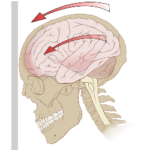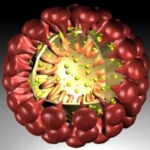
Small Intestinal Bacterial Overgrowth (SIBO)
Small intestinal bacterial overgrowth (SIBO) is a displacement of bacteria from the large intestine to the small intestine. The condition does not suggest that there is abnormal bacteria or infectious bacteria, but that normal bacteria from the colon (large intestine) have ascended upwards into the small intestine. SIBO is an extremely common condition in my practice and the symptoms can vary, but in most there will be abdominal bloating to the point of creating pain and increased flatulence. However, some will experience bloating with reflux rather than flatulence. There can be constipation, diarrhea, or alternating constipation with diarrhea. In fact, if you have ever been diagnosed with irritable bowel syndrome there’s an 84% chance that at the “root” of your symptoms is this displacement of bacteria.
Basic Gastrointestinal (GI) Physiology
In order to appreciate the effects of SIBO better it’s necessary to understand some basics of human digestion. For the sake of keeping your interest in reading along, this will not be a complete or even extensive lesson in GI physiology, but rather, key points that will help you to understand SIBO as an illness.
When food enters the stomach, gastric acid is secreted in order to lower pH (make more acidic), which activates certain digestive enzymes. Gastric acid also acts as a “trap” to kill any unwanted organisms hitching a ride on uncooked foods or from sucking on your fingers. When food enters the small intestine secretions from the pancreas and gallbladder meet food as it enters the first section of the small intestine. For the rest of the length of the small intestine (20 feet) enzymes and bile acids work to digest food and release their macro/micro nutrients for our absorption. When this process is completed, what’s left over is things like indigestible fibers and resistant starches that our enzymes were unable to break down.
At this point the bacteria in the colon (large intestine) complete the digestive process by breaking down those remaining components we can not. This helps support our colonic bacteria by feeding them, but in turn they also provide us with short-chain fatty acids (SCFA’s) and vitamins as a result.
SIBO Symptoms
As I mentioned earlier in the introduction there are some pretty common symptoms present in all SIBO cases, however, the symptoms can vary from person to person.
gas (flatulence)
frequent belching
abdominal pain
constipation
alternating constipation/diarrhea
heart burn
brain “fog”
joint pain
greasy stool
sinus congestion
depression
headaches
What Causes SIBO?
Low Stomach Acid
Stomach acid is secreted from the cells in the stomach lining to manipulate the pH (relative acidity/alkalinity) of the stomachs environment. The stomach does this to activate various enzymes that are responsible for digesting food. Another purpose for having a low pH (acidic environment) is to create what’s called an “acid trap”, which traps bacteria and parasites digesting/killing them before they have the opportunity to “seed” the small intestine. Reasons for low stomach acid are; proton-pump inhibitors or other antacids, advanced age, stress/anxiety, etc.
Intestinal Hypomotility
Most people are familiar with the term, “peristalsis”, which is the rhythmic contraction of intestinal tissues that propel food stuff through the GI tract for the purpose of digestion and eventual elimination. Another purpose of this downward rhythmic contraction is to keep bacteria from ascending into the small intestine. Our large intestine has very large numbers of bacteria, but the small intestine has a relatively small amount of bacteria. Dysfunction of intestinal motility happens from infections (bacterial, viral, and parasitic), autoimmunity, and from SIBO itself.
Dysfunctional Iliocecal Valve
The iliocecal valve (IC valve) is situated at the transition zone between where the small intestine ends and the large intestine begins. It’s responsible for preventing contents of the large intestine from refluxing back up into the small intestine and for controlling the entry of small intestinal contents into the large intestine. If this valve becomes dysfunctional it’s easy to imagine how SIBO could quickly develop. IC valve dysfunction could be due to problems within the vagus nerve or due to sympathetic nervous system tonification. This could be simply the result of acute/chronic stress or as complex as a chronic infection such as Lyme disease.
Testing for SIBO
Options to test for SIBO are limited, but there are a couple that we recommend. First, a gastroenterologist can take a sample of the duodenal surface fluid called a “duodenal aspirate”. This is cultured to see if excessive amounts of bacteria can be cultured out. This requires a referral to a gastroenterologist and is a higher intervention force, but can be done if you have any upcoming endoscopy procedures.
The second option and the most frequently used by our patient’s is a hydrogen/methane breath test. After consuming a drink mixture that feeds the bacteria, exhaled gases are trapped in special glass vials that can be analyzed to see if you are expelling larger than normal amounts of either hydrogen or methane gases. This is a test that can be done at home using a special kit.
Treatment for SIBO
Treatments will range from “natural” antimicrobial agents to antibiotics like rifaximin. Most physicians have their own special protocol for SIBO and I certainly have mine. Regardless of the agents used, what’s important is that the underlying mechanisms for which you developed SIBO were uncovered and corrected or else this condition will continue to come back each time you successfully treat it.
If you feel that this may be a condition you have, please do not hesitate to find a practitioner experienced in evaluating GI symptoms and diagnosing SIBO. This condition is way too common and is causing many people day to day distress as well as unknown future consequences to their health.


